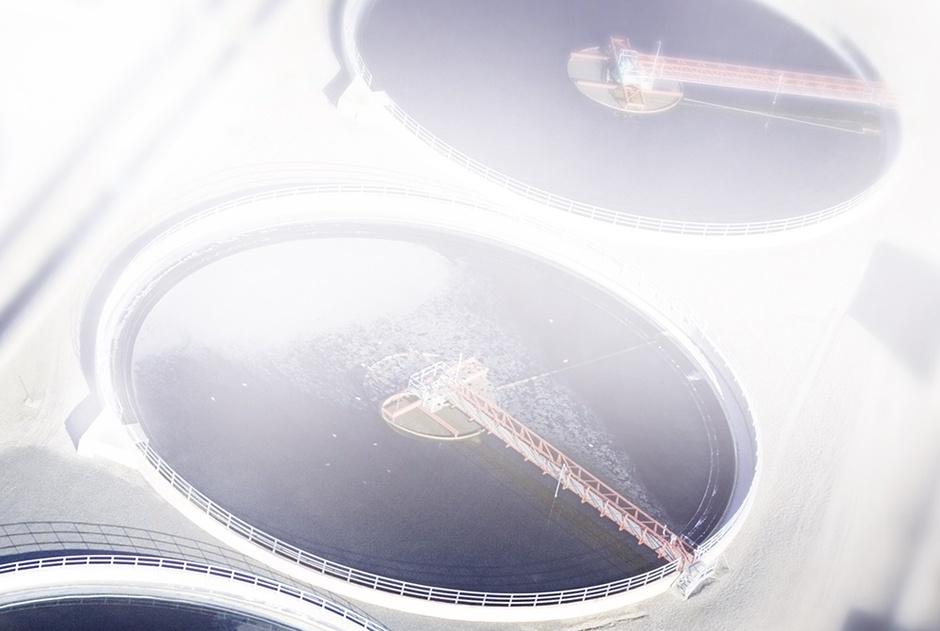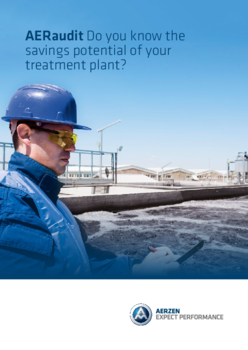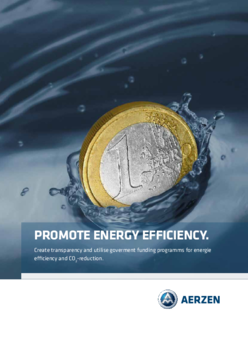Water Treatment in the Future
Water treatment is undergoing a profound transformation and is gaining in importance worldwide. Water is an increasingly scarce commodity. Particularly in poorer countries, it is not available in sufficient quantities. Bottlenecks are becoming more and more severe due to growing demand on the part of industry, agriculture and energy generation. Although problems such as water scarcity are of limited relevance here in Germany, a responsible, resource-saving approach to water is an important issue for the future. Water treatment plays a key role in the subject of water availability. Around 80 percent of waste water worldwide still goes untreated , though in many cases, treating it would be technically possible. In the long term there is therefore considerable potential for significantly reducing the level of consumption of water by industry.
Exploiting the potential of the water treatment of the future
At the same time, the focus is also on energy efficiency, especially in industrialised countries. Waste water treatment plants are considered veritable power guzzlers due to the energy-intensive processes in aeration tanks. Against a background of ambitious climate protection goals and rising energy prices, energy efficiency in water treatment will become one of the major issues for the future.
Particularly in the area of energy technology for waste water treatment tanks, it is clear that reliable technologies for sustainably reducing energy consumption already exist and are highly attractive from the operator’s point of view. Investments in modern ventilation technology pay off very quickly and improve plant efficiency without undue expense, especially in the case of older water treatment plants. The water treatment of the future holds far-reaching potential for mitigating water scarcity, promoting responsible management of raw materials and decreasing energy consumption. An example with major potential for the future is the generation of energy from waste water.
Generating electricity and heat from waste water
One of the most important issues for the future in the field of water treatment is the generation of energy from waste water. Every cubic metre of waste water contains four times the amount of energy used to purify that water; from a purely theoretical standpoint a waste water treatment plant could therefore produce more energy than it consumes. The principle behind this notion is simple: The solids contained in waste water, such as excrement, toilet paper or other particulates, can generally be used in biogas plants to generate electrical energy and heat. The technologies for this process have already been applied successfully, but there is still plenty of room for growth. For that reason, new technologies aimed at increasing sludge incineration are currently being researched and tested in the form of prototypes – with promising results.
But many obstacles still have to be overcome before the full potential of waste water in energy generation is realised. One of the challenges is to significantly increase the percentage of solids that can be extracted from the waste water before the actual purification process. This could be achieved, for example, by adding polymers that cause the sludge to clump together.
Waste water treatment plants as veritable power guzzlers – energy can be saved here
Energy efficiency is the most important issue for the water treatment of the future. On the one hand, operators of waste water treatment plants see themselves constantly faced with increasingly strict environmental regulations on the part of politicians. On the other, they have to introduce efficiency measures to counteract rising electricity prices. To understand the importance of energy efficiency in waste water treatment tanks, it helps to take a look at the energy balance of a treatment plant.
The roughly 10,200 waste water treatment plants installed in Germany use a total of approximately 4,400 gigawatt hours (GWh) of electrical energy per year. This corresponds to a specific consumption of 35 kWh/population equivalent per year. Waste water treatment plants therefore still account for around 0.7% of the power consumed in Germany.
It turns out that aeration is by far the main consumer for almost all the waste water treatment plants with sludge processes; while the percentage of power consumed by plants with aerobic sludge stabilisation is between 60% and 80%, it is still around 50% for plants with sludge digestion. Furthermore, there are other energy consumers that are not as significant as the sludge process. The main energy consumers at a glance:

- Internal recirculation DN
- Pre-dewatering
- Post-dewatering
- Intermediate lifting mechanism
- RLS handling
- Denitrification circulation (DN)
- Grit trap aeration
- Aeration tank ventilation
- Spatial filter
- Inlet lifting mechanism
- Digester circulation
A look at the average power consumption of these plants shows that the most potential for reducing energy consumption lies in the aeration of aeration tanks and in the constantly running pumping stations, for example, the inlet, the intermediate lifting mechanism and the internal recirculation. The aeration of aeration tanks plays the most important role, which is why this aspect is examined in detail later on.
Energy consumption in focus: additional measures for increasing efficiency
Increasing the energy efficiency of aeration tanks and using sludge or digester gas to generate energy and heat are not the only measures on the road to the water treatment of the future. Additional potential lies, for example, in integrating renewable energies into the energy systems of waste water treatment plants.
It is possible, for instance, to install solar cells or wind turbines on the grounds of waste water treatment plants to further improve the ratio of generated energy to total energy consumption. At the same time, it should obviously be kept in mind that these measures are subject to the same constraints as other sites and the profitability of the investment depends on the prevailing conditions, such as local sunshine and wind conditions. Although the use of solar collectors to generate heat is also of particular interest for plants without sludge digestion, this approach will probably play only a subordinate role in the future. For plants with aerobic sludge stabilisation, there is already usually an excess of heat available in the summertime, which renders the measure superfluous for this type of waste water treatment plant. Other measures for ensuring energy-efficient water treatment in the future seek to use hydroelectric power in the inlets and outlets of the waste water treatment plant. This approach offers only limited potential, however, because the available fall height is low and the amount of energy generated does not justify the effort and expense.
Particularly in the case of larger plants with sludge incineration, it is recommended to use bar screen debris as an additional fuel source to further increase energy efficiency. However, the potential of this technology is limited by the use of bar screen debris washers, which reduce the accumulation of debris.

Demand-driven aeration technology: high-efficiency measures
What happens in an aeration tank?
To understand why aeration tanks consume so much energy, let us take a brief look at the processes in a biological cleaning system. The aeration tanks rid the mechanically pre-clarified waste water of organic substances such as phosphates and nitrogen compounds. This decomposition is effected by microorganisms such as bacteria, the aerated sludge.
To biologically remove phosphates from waste water in the first step, the first part of the tank is kept low in oxygen. A great deal of oxygen is then introduced into the waste water by means of compressed air. The bacteria multiply rapidly because of the oxygen, causing the phosphates to bind with the biological sludge when combined with a dissolved precipitant. The sludge then decomposes in secondary treatment tanks and can be fed back into the aeration tanks or conveyed to the sludge treatment system. This process uses a great deal of energy due to the introduction of large quantities of compressed air.
Challenges and potential for optimisation in aeration technology
The challenge of aeration technology consists mainly in providing a demand-driven air supply capable of handling severe fluctuations in load profiles and varying levels of contamination. Older waste water treatment plants are often equipped with blower technologies that always provide the same amount of oxygen regardless of the supply situation, even though this is not always necessary. The challenge is therefore to implement demand-driven aeration on the one hand, and on the other, to supply the partial-load ranges of the load profile as efficiently as possible.
To efficiently supply energy to aeration tanks, AERZEN relies on a product portfolio that consists of one or more blower technologies implemented in accordance with the individual requirements of each waste water treatment plant. This approach makes it possible to achieve maximum efficiency and fully exploit the potential for savings.
The portfolio consists of turbo blowers, positive displacement blowers and rotary lobe compressors. The advantage is obvious: Each of these technologies has individual advantages and strengths, which can be tailored to the individual requirements. Whereas turbo blowers, for example, are impressively energy efficient by design, rotary piston machines excel in terms of adjustability and almost unvarying efficiency in the partial load range. As a hybrid, the rotary lobe compressor combines the advantages of blower and compressor technology in a single system. Depending on the application, it is advisable to choose either a combination of different technologies or the most efficient technology for the case at hand. At the same time, it is possible to install not only different technologies, but also different sizes. And additional potential for savings can be realised if this approach is combined with an intelligent global control system.
Experience has shown that substantial energy savings can be achieved through optimised aeration. For example, by installing an Aerzen turbo blower and a Delta hybrid, the Rheda-Wiedenbrück waste water treatment plant managed to save 40,000 euro in energy costs – per year.







